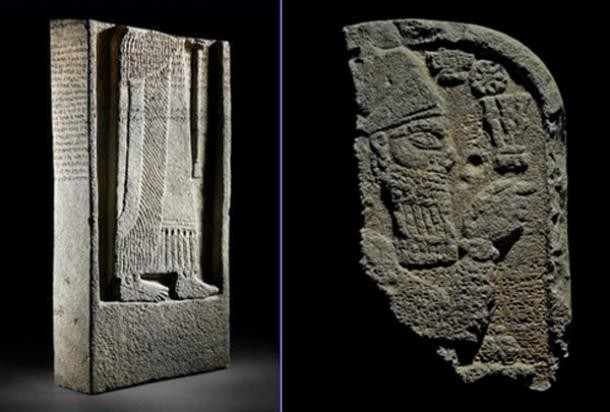Once, as a child, I witnessed a curious scene in a market. A municipal police officer had just fined an elderly gypsy woman for street vending without a license. She is her, after collecting the fine, and as the guard walked away, she exclaimed:“Uncle snake! So your mustache dies! That was my first contact with the world of curses. Since time immemorial, human beings have stood out for wishing their neighbor all kinds of mischief. The Sumerians, Assyrians and Babylonians were no strangers to this hobby. In fact, we have found numerous examples of this in excavations. Any legal document was accompanied by some malicious phrase, and its length could increase with the importance and social category of the sender.
One of the simplest cases appeared written on a simple bowl. The would-be thief was wished:"... may his tongue dry in his mouth... may his legs dry... may he burn like fire and brimstone (fever)... «. If instead of being a bowl, it becomes an alabaster vase, the thief ends up as minced meat for empanadas. Most of the tablets found consist of contracts, commercial letters, judicial resolutions... Many of them are accompanied by some appropriate anathema. The Akkadians invented the custom of wrapping the contract in turn in a layer of clay, known as an "envelope", on the surface of which they inscribed the names of the signatories, their personal seals, a summary of the subject of the contract and, sometimes, a curse. . In one of those envelopes found in Nippur, which contained a contract for the sale of land, the text appears:"... whoever breaks this contract, may Enlil make him disappear in the sight of all, may Gibil confuse his memory and let Ishtar destroy her seed to the fifth generation «. It is interesting from the moment in which it brings together two themes that brought the Sumerians to their heads:the lack of children and being forgotten by their descendants, thus losing the possibility of having annual funerary rites in their memory.
Those who made the most use of threats to others were -of course!- the rich and powerful. In the great library of the Assyrian king Ashurbanipal , in Nineveh, the tablets were protected with the usual phrases of ill wishes. Thus, for example, in a medical treatise the text has been found:“Whoever steals these tablets or damages them, may his body have no rest, may the water not comfort him, may his bones be broken, may the Burning wind accompany him, may the dust be his food and his memory be forgotten by men ”. We do not know if the curse covered the delay in the return of the work on duty. With such a system it is clear that library cards were not needed. Very high-level agreements, such as weddings of rulers' offspring or international treaties, were not only accompanied by terrible anathemas, but they were countersigned by members of the high clergy with their personal seals. In the marriage agreement of Taram-Agadé , youngest daughter of the Akkadian king Naram-Sin , the seal of her older sister Enmenanna appears , which was Entum (high priestess) of the sacred precinct of Ur. That was equivalent to the goddess Ningal herself being a witness to the threats and fulfilling them. When Naram-Sin himself defeated and had king Hisepratep killed of Elam, he compelled his son Helu to sign a brotherhood treaty with Akhad . Actually, even if they called it that, it was a full-fledged submission agreement, and the Akkadian sovereign did not hesitate to place in it a list of no more and no less than 19 Elamite gods to witness the usual curses.
One of the most famous curses was found in the tombs of the queens in Nimrud, the Assyrian Khalku, more specifically in the tomb of queen Yaba , wife of Tiglath-Pieleser III . Along with a crown, 79 earrings, 30 rings, 4 anklets, 14 bracelets, 15 glasses and numerous metal chains and semi-precious stones, a tablet appeared with the text:“I pray to the gods of the world on the other side (world of the dead) may the spirit of whoever touches my grave, violates my coffin or steals my jewels, walk restlessly after his death under the scorching sun, and may the demons of insomnia torment him forever ”. For both things, Queen Yaba is known as “the Tutankhamun of Assyria ”.

Yaba's Tomb
And it is in Assyria where we find another curse that has given commissioner Bernard Hogan-Howe many headaches. from Scotland Yard. The upper part of a broken stela of the Assyrian king Adad-Nirari III is preserved in the British Museum. , stepson of Sammuramat , the queen who could give rise to the myth of Semiramis . It was acquired by the museum in 1881 from a private collector. The lower part was recently put up for sale at an auction house, and Scotland Yard held the piece, suspecting it was art contraband.

Lower and upper part of the stele of Adad-Nirari III
A dealer from Lebanon has sued the commissioner alleging that he has evidence of the lawful origin of the piece, and holding the agent, who is about to retire, responsible for the police operation. He asks for compensation of 200,000 pounds. On one of the sides of the stela appears the text:“Whoever removes this image from the presence of Salmanu (a god of war in whose temple the stela was) and takes it to another place, whether he throws it to the water as if he covers it with earth, or takes it away and places it in a sacrilegious house where it is inaccessible, may the god Salmanu, the Great Lord, overthrow his sovereignty. May his name and his seed disappear from the earth and may he live in the community of the slaves of his land ”. Shortly after the discovery of the tomb of Yaba The First Gulf War began in 1991, and in 2003 the treasure had to be submerged in a pool in a basement to prevent the Baghdad Museum's own neighbors from looting it. It seems that the Assyrian curses do not bring anything good, neither to the country inheriting their culture, nor to the London policemen who, paradoxically, try to prevent cultural looting.
Harry Houdini said that the best antidote to a curse was a good laugh. Who knows! Maybe that works against jinxes too.
